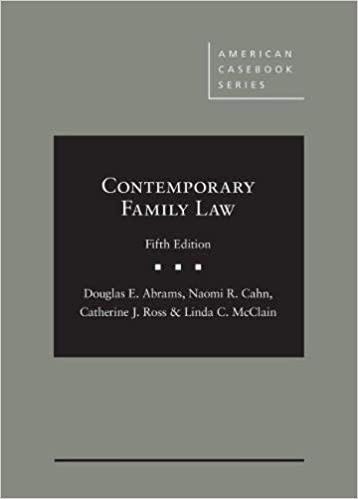Question
1..Distinguish between a moral obligation not to injure and a duty not to injure. Why is this distinction important? 2..How are the concepts of the
1..Distinguish between a moral obligation not to injure and a duty not to injure. Why is this distinction important?
2..How are the concepts of the reasonable man and foreseeability related?
3..Does strict liability apply to manufacturers of goods where the goods are defective and cause injury or damage?
4..Is nuisance simply another name for negligence? If not, why not?
5..Does a professional person have any responsibility to a person other than the one who engaged the professional services?
6..Define "negligent misrepresentation."
7..What is the 'threefold test' and how is it applied in cases of negligent misrepresentation? In what way has the Supreme Court of Canada changed the application of this test?
8..Outline the responsibility of a surgeon to a patient. Is it limited only to the actual performance of the medical procedure?
9..Describe the burden placed upon an offeror by the courts where the offeror alleges that indirect notice of revocation was received by the offeree.
10..Explain why communication of an offer must take place before an offer may be accepted. Why is this important?
11..Under what circumstances would "silence" be acceptance?
12..Describe four instances where an offer might lapse before acceptance.
Step by Step Solution
There are 3 Steps involved in it
Step: 1

Get Instant Access to Expert-Tailored Solutions
See step-by-step solutions with expert insights and AI powered tools for academic success
Step: 2

Step: 3

Ace Your Homework with AI
Get the answers you need in no time with our AI-driven, step-by-step assistance
Get Started


